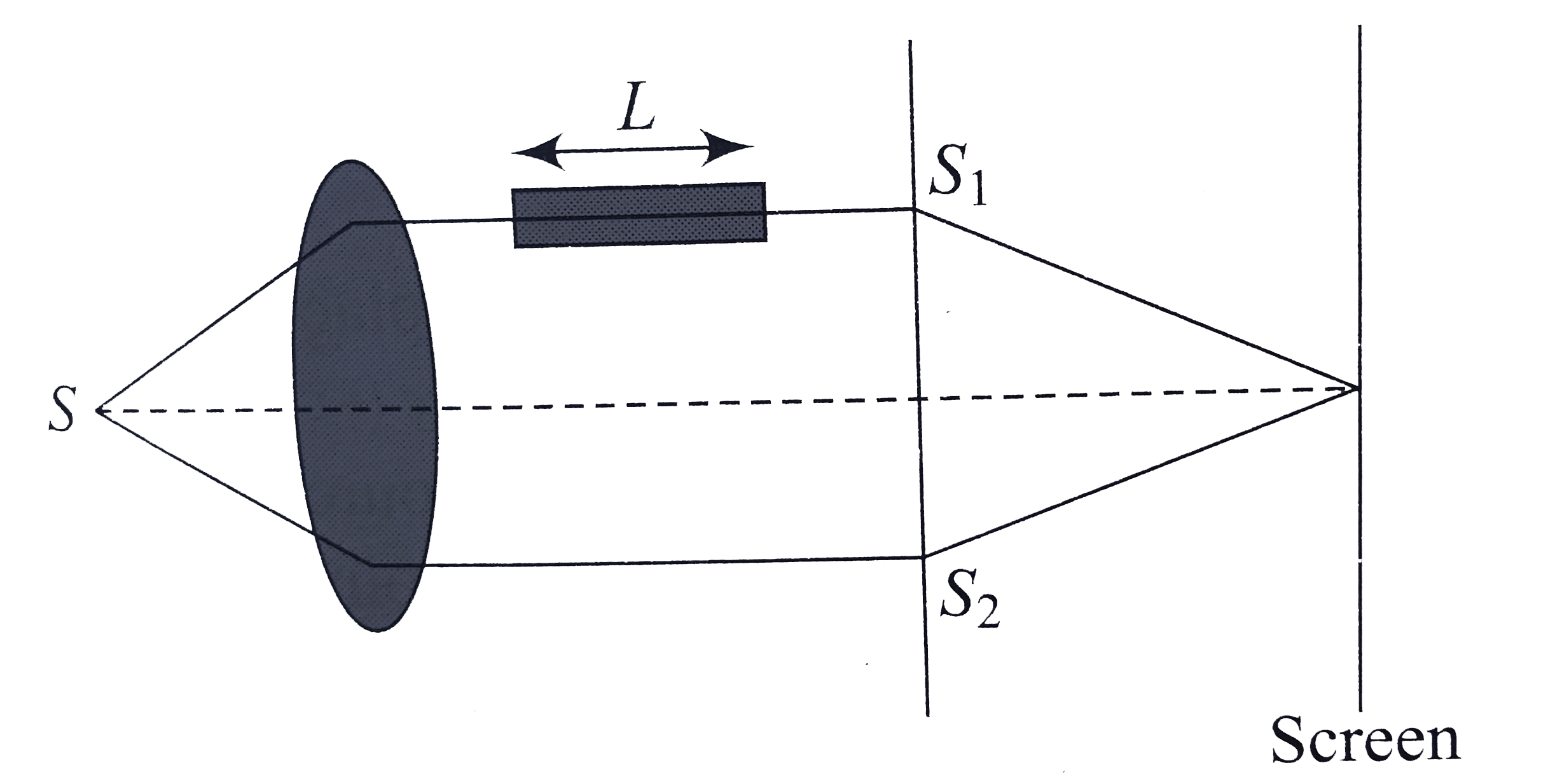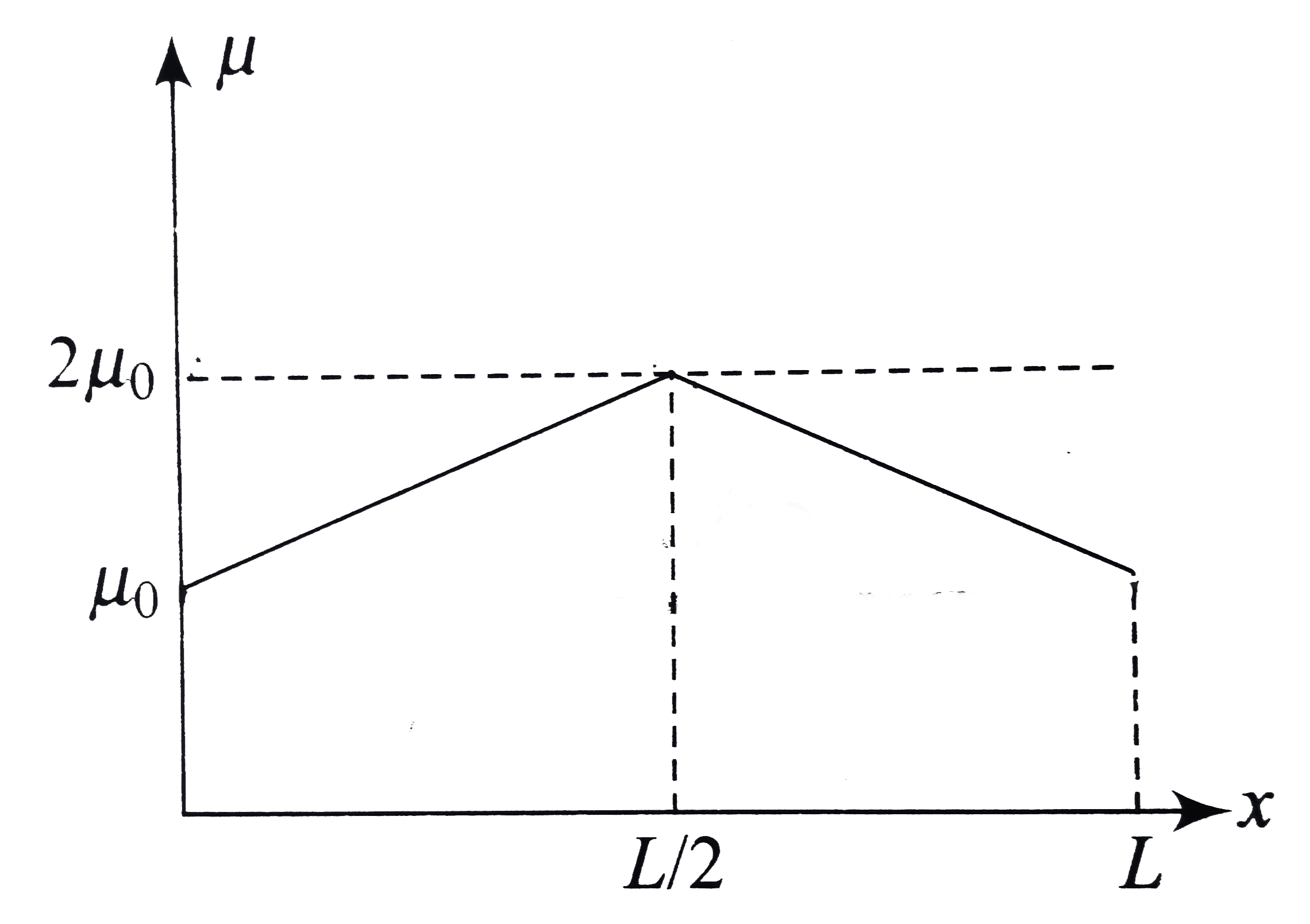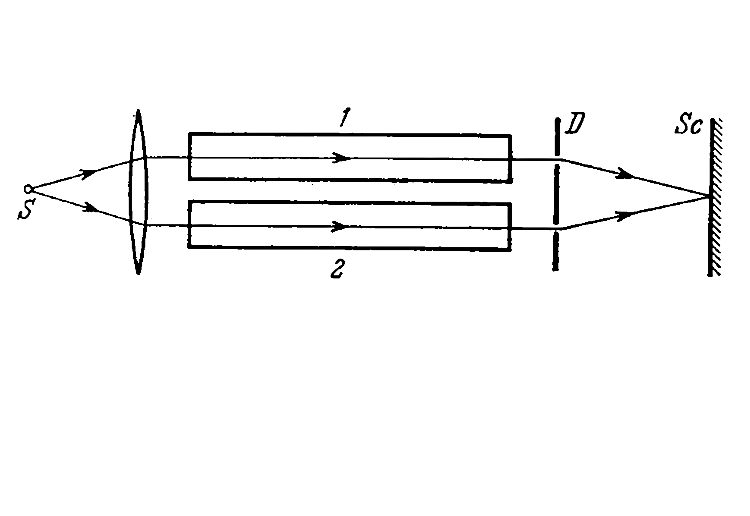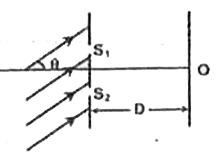Figure shows a narrow slit S illuminated b a monochromatic light of wavelength λ in a double-slit experiment. In the path of the rays reaching the upper slit S1, a tube to length L is interposed in which the index of reflection of the medium varies linearly as shown in figure . The position of the central maximum in the interference pattern on the screen was displaceed by N fringes. Find the value of N in terms of μ0, L and λ.


The correct Answer is:[(1.5)μ0−1]L/λ
Optical path difference,
Δx=2∫L/20μdx−L=2μ0∫L/20(1+2xL)dx−L
=32μ0L−L=[(1.5)μ0−1]L
Now, Δx=Nλ
⇒N=Δx/λ=[(1.5)μ0−1]L/λ
Topper's Solved these Questions
- BOOK - CENGAGE PHYSICSCHAPTER - WAVE OPTICSEXERCISE - Single Correct128videos
WAVE OPTICS
- BOOK - CENGAGE PHYSICSCHAPTER - WAVE OPTICSEXERCISE - Multiple Correct8videos
WAVE OPTICS
- BOOK - CENGAGE PHYSICSCHAPTER - WAVE OPTICSEXERCISE - Exercise 2.222videos
WAVE OPTICS
- BOOK - CENGAGE PHYSICSCHAPTER - THERMODYNAMICSEXERCISE - QUESTION BANK34videos
THERMODYNAMICS
- BOOK - CENGAGE PHYSICSCHAPTER - WAVESEXERCISE - QUESTION BANK38videos
WAVES
Similar Questions
In a Young's double slit experiment , the slits are Kept 2mm apart and the screen is positioned 140cm away from the plane of the slits. The slits are illuminatedd with light of wavelength 600nm. Find the distance of the third brite fringe. From the central maximum . in the interface pattern obtained on the screen frings from the central maximum. 3
View SolutionFigure illumstrates an interferometer used in measurements of refreactive indices of transparent substances. Here S is

a narrow slit illuminated by monochromatic light with wavelength λ=589nm, 1 and 2 are identical tubes with air of length l=10.0cm each, D is a diaphragm with two slits. After the air in tube I was replaced with ammonia gas, the interference pattern on the screen Sc was displaced upwards by N=17 fringes. The refreactive indec of air is equal to n=1.000277. Determine the refractive index of ammonia gas.View Solution
Knowledge Check
- Question 1 - Select One or More
Using monochromatic light of wavelength λ in Young's double slit experiment, the eleventh dark fringe is obtained on the screen for a phase difference of _____.
A112πradB212πradC13πradD21πrad - Question 2 - Select One
In Young's double slit experiment parallel monochromatic light is incident on both the slits at an angle as shown in the figure. To obtain the central maxima at on the screen we can
 Aplace a thin glass sheet of appropriate thickness in front of slit S1.Bplace a thin glass sheet of appropriate thickness in front of slits S2Csubmerge the whole experimental setup in appropriate liquid.Drotate the plane of slits by angle 6 anticlockwise
Aplace a thin glass sheet of appropriate thickness in front of slit S1.Bplace a thin glass sheet of appropriate thickness in front of slits S2Csubmerge the whole experimental setup in appropriate liquid.Drotate the plane of slits by angle 6 anticlockwise - Question 3 - Select One
In the Young's double slit experiment apparatus shown in figure, the ratio of maximum to minimum intensity on the screen is 9. The wavelength of light used is λ, then the value of y is
 AλDdBλD2dCλD3dDλD4d
AλDdBλD2dCλD3dDλD4d
In a single slit diffraction of light of wavelength λ by a slit of width e, the size of the central maximum on a screen at a distance b is
View SolutionIn a Young's double slit experiment, (slit distance d) monochromatic light of wavelength λ is used and the fringe pattern observed at a distance D from the slits. The angular position of the bright fringes are
View SolutionIn a double slit experiment, the separation between the slits is d and distance of the screen from slits is D. If the wavelength of light used is λ and I is theintensity of central bright fringe, then intensity at distance from central maximum is
View SolutionIn a double slit experiment, the two slits are 1mm apart and the screen is placed 1m away. A monochromatic light of wavelength 500nm is used. What will be the width of each slit for obtaining ten maxima of double slit within the central maxima of single-slit pattern?
View SolutionIn Young’s double slit experiment, if width (aperture) of the slit S is increased keeping other parameters constant, then the interference frings will :
View Solution

